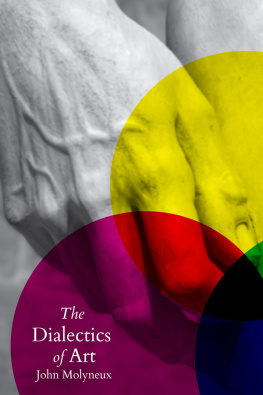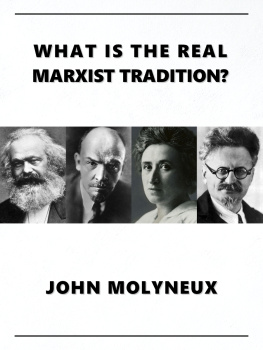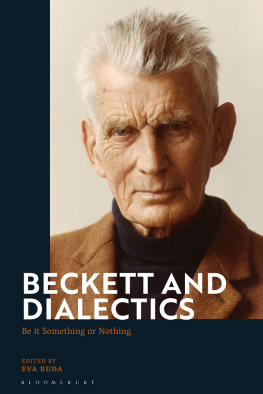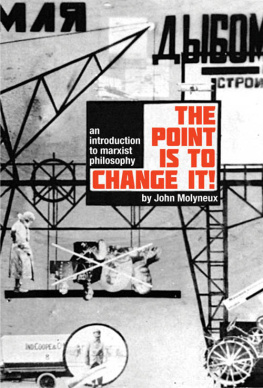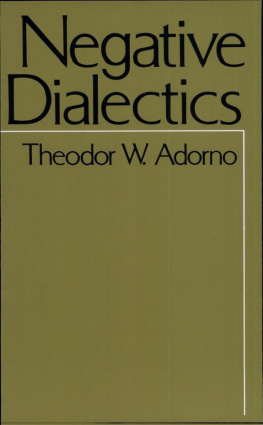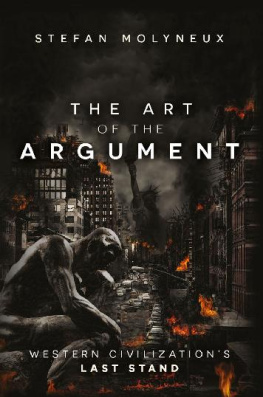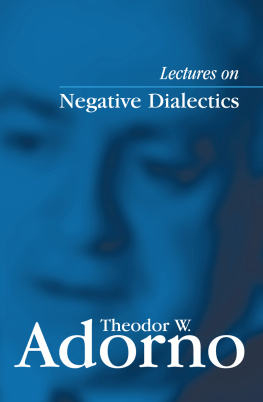John Molyneux - The Dialectics of Art
Here you can read online John Molyneux - The Dialectics of Art full text of the book (entire story) in english for free. Download pdf and epub, get meaning, cover and reviews about this ebook. publisher: Lightning Source Inc. (Tier 3), genre: Art. Description of the work, (preface) as well as reviews are available. Best literature library LitArk.com created for fans of good reading and offers a wide selection of genres:
Romance novel
Science fiction
Adventure
Detective
Science
History
Home and family
Prose
Art
Politics
Computer
Non-fiction
Religion
Business
Children
Humor
Choose a favorite category and find really read worthwhile books. Enjoy immersion in the world of imagination, feel the emotions of the characters or learn something new for yourself, make an fascinating discovery.
- Book:The Dialectics of Art
- Author:
- Publisher:Lightning Source Inc. (Tier 3)
- Genre:
- Rating:4 / 5
- Favourites:Add to favourites
- Your mark:
- 80
- 1
- 2
- 3
- 4
- 5
The Dialectics of Art: summary, description and annotation
We offer to read an annotation, description, summary or preface (depends on what the author of the book "The Dialectics of Art" wrote himself). If you haven't found the necessary information about the book — write in the comments, we will try to find it.
The Dialectics of Art — read online for free the complete book (whole text) full work
Below is the text of the book, divided by pages. System saving the place of the last page read, allows you to conveniently read the book "The Dialectics of Art" online for free, without having to search again every time where you left off. Put a bookmark, and you can go to the page where you finished reading at any time.
Font size:
Interval:
Bookmark:
The Dialectics of Art
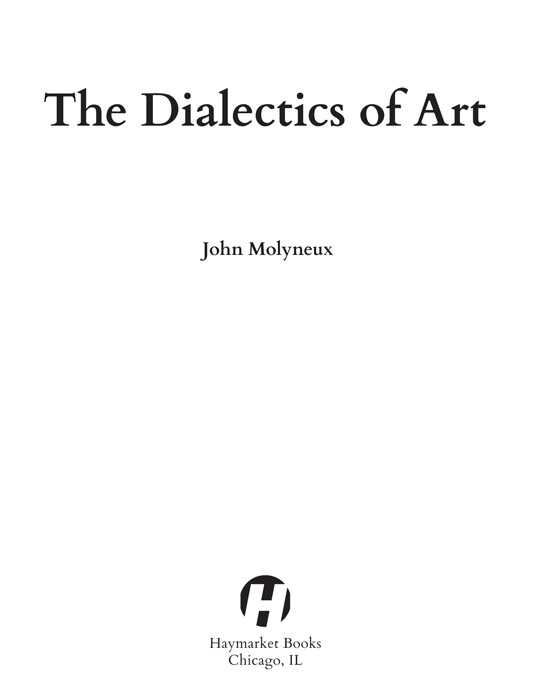
2020 John Molyneux
Published in 2020 by
Haymarket Books
P.O. Box 180165
Chicago, IL 60618
773-583-7884
www.haymarketbooks.org
ISBN: 978-1-64259-213-9
Distributed to the trade in the US through Consortium Book Sales and Distribution (www.cbsd.com) and internationally through Ingram Publisher Services International (www.ingramcontent.com).
This book was published with the generous support of Lannan Foundation and Wallace Action Fund.
Special discounts are available for bulk purchases by organizations and institu-tions. Please email for more information.
Cover photograph of a detail of Michelangelos David by mkistryn. Cover design by Rachel Cohen.
Library of Congress Cataloging-in-Publication data is available.

This book is dedicated with gratitude to Mary Smith and to my former students at the University of Portsmouth, in dialogue with whom many of its ideas were worked out and developed.
Preface
This book is the product of a lifelong engagement with art and a brief meeting with activist-historian Paul Le Blanc in Dublin in 2018. Paul Le Blanc and I share an interest in Lenin. He has written several acclaimed books on Lenin and Leninism, and I had published Lenin for Today in 2017. When Paul visited Dublin in summer 2018, we got together to compare notes. In the course of our conversation, I asked if his publisher, Haymarket Books, might be interested in publishing or republishing any of my work. He put me in touch with Anthony Arnove, and I put forward some proposals, one of which was for The Dialectics of Art. So I should start by expressing major thanks to Paul and to everyone at Haymarket.
As for my engagement with art, it began with my childhood drawings, which my mother put up on the kitchen wall until it was covered from top to bottom. It was the 1950s, and we lived on the ground floor of a large house in Belsize Park in London, the upstairs rooms of which my mother let to boarders. The tenants were a very heterogeneous, multicultural bunch, including Irish, Africans, Indian communists and a young artist, Sheila Fell, who, with her boyfriend Clifford, rented two rooms on the top floor, one of which served as a studio. Sheila was from Aspatria, in Cumberland, and painted marvellous landscapes of the Cumberland countryside and mountains. I remember, aged about eleven, seeing one painting of a mountain in the studio room which made a deep impression on me which has stayed with me all my life.
Sheila also painted a portrait of me when I was about seven, which remains in the possession of my son. Art world people used to come to the house to visit her, including L. S. Lowry, who became her patron, and the leading art critic of the day, David Sylvester. Oddly, I recall that it was when it was explained to me who David Sylvester was that the idea first came into my head I might like to be an art critic.
My engagement with art broadened and deepened at secondary school. This was a fairly traditional grammar school, Westminster City, just off Victoria Street in central London. In the sixth form, which I entered at fifteen, we were allowed to give up games and do art instead. The school was located midway between the National Gallery in Trafalgar Square and the Tate Gallery (now Tate Britain) at Millbank, on the Thames. Both were in walking distance, and after initial school trips the art master allowed me to go, on my own or with a friend, to these galleries on Wednesday afternoons. As a result I spent more or less one afternoon a week in these great galleries, and so many of the paintings I saw there Pieros The Baptism of Christ, Holbeins The Ambassadors, the wonderful Rembrandts, Rubenss Het Steen, the van Goghs, Matisses Snail, the Francis Bacons stayed with me permanently. Many feature as examples in this book. In 1964 my relationship to art changed again when I went to a Robert Rauschenberg exhibition in the Whitechapel Gallery in the East End. Going into the Whitechapel, I had little understanding of what I was about to see, and not much more when I did see it. But when I stepped out of the gallery into the streets of the East End, I experienced something of a revelation. The art I had seen inside works like Charlene and Rebus reflected and represented what was in front of my eyes on the street. Art, I suddenly realised, was not just about great masters from the past or eternal beauty and suchlike; art was relevant today, to the life I was living now. This changed and intensified my view not only of visual art but also of the literature I was studying for A level English Shakespeare, Keats, Fielding, T. S. Eliot and the like. Then, in my second year in the sixth form, I entered an essay competition for a travel scholarship; by writing about the Renaissance, I won a trip to Florence and Rome. The trip took place in August 1965, affording me the privilege of seeing Brunelleschis Duomo, Giottos Campanile, Michelangelos David and Slaves, Botticellis Primavera in the Uffizi Gallery, works by Titian in the Pitti Palace, the Sistine Chapel and so on.
I never lost my interest in art I went back to Florence and Rome in 1971 and regularly visited art galleries but from 1968, when I got caught up in revolutionary politics, it took a back seat to political activism and Marxist theory, as well as the complications of my personal life, which were considerable. It was in terms of Marxist theory that I developed as a writer, publishing books such as Marxism and the Party (1978) and What Is the Real Marxist Tradition? (1983). Then in 1992, after many vicissitudes, I took a job as history and theory lecturer in the School of Art and Design at the University of Portsmouth. Over the years my work became more and more focussed on the Fine Art course, and eventually my office was located in the middle of the Fine Art studio. I found this work very rewarding. I greatly enjoyed lecturing on the Art and Society courses (which were my own creation) and supervising dissertations, many of which were very interesting projects. And I got on very well with my students, especially the art students: quite a number remain my friends to this day. In the process, my knowledge of art increased and my ideas became clearer. After five years or so, I felt ready to start writing about art. My first published piece was a review of the Young British Artists (YBAs) Sensation show in 1998, which is reproduced in this book.
Another important element in my engagement with art was organising and curating the Left in Vision art shows at the annual Marxism Conference at the University of London Union in Bloomsbury; these shows were held for four successive years from 2007 to 2010, when I retired and moved to Dublin. They were open to artists broadly on the left, and all kinds of art was welcome of course, much of it was overtly political, but it did not have to be. I had no funding for these shows and relied entirely on the limited resources provided by the School of Art and Design, as well as huge amounts of effort and goodwill on the part of a number of my students and a number of socialist activists and artists. Obviously the standard of the work varied it could not be otherwise but I think that overall the shows got stronger year on year and that in the process we featured some really outstanding work, including pieces by May Ayres, Roxanne Chappell, Dave Garner, Leon Kuhn, Red Saunders, Yasser Alwan and others. During this period I continued to write about art, as well as Marxism and current politics, especially for the journal
Next pageFont size:
Interval:
Bookmark:
Similar books «The Dialectics of Art»
Look at similar books to The Dialectics of Art. We have selected literature similar in name and meaning in the hope of providing readers with more options to find new, interesting, not yet read works.
Discussion, reviews of the book The Dialectics of Art and just readers' own opinions. Leave your comments, write what you think about the work, its meaning or the main characters. Specify what exactly you liked and what you didn't like, and why you think so.

